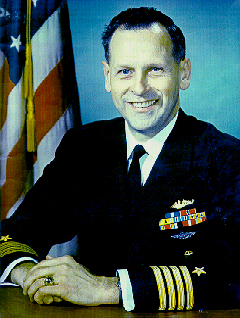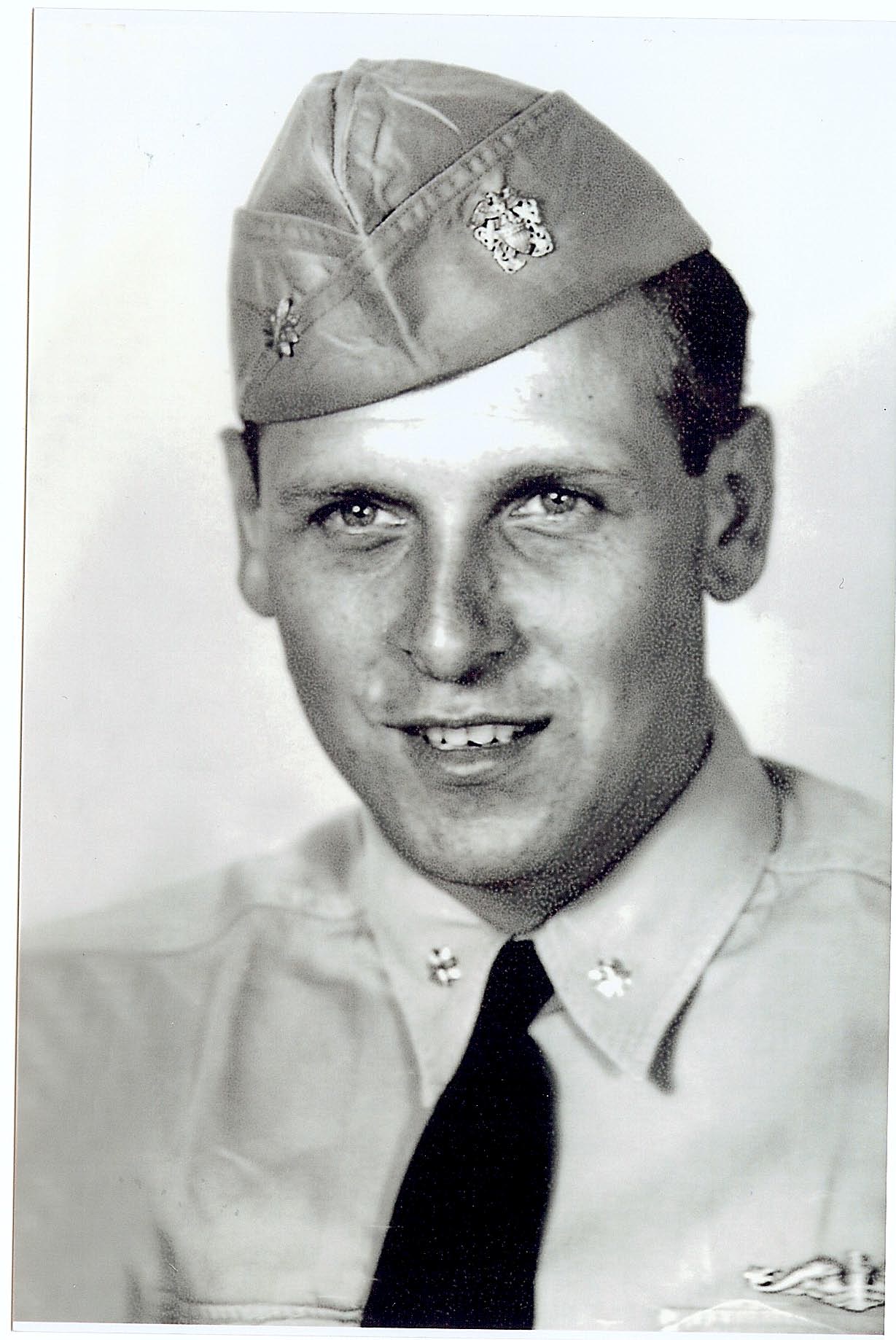Birth: May 28, 1918
Plattsburgh, Clinton County, New York
Death: December 16, 2008
Sharon, Litchfield County, Connecticut
Captain Charles Robert Clark, Jr., United States Navy (Rrtired), age 90, of North Egremont, Massachusetts, died Tuesday, December 16, 2008, at Sharon Hospital, Sharon, Connecticut, after a long, valiant struggle with ALS (Lou Gehrig’s Disease).


Bob was US Submarine Veteran-World War II, a time when one of four did not return from Patrol. He was the youngest submarine commander in World War II. He earned the Navy Cross, the Bronze Star with Valor, the Asiatic Pacific Campaign Medal with 3 stars, and the Submarine Combat Patrol Insignia with 4 stars during his wartime service.
He was a member of the US Submarine Veterans Holland Club with over 50 years of being qualified in submarines. Bob received the Joint Service Commendation Award for originating the trapezoidal area theory and predicting the location of Soviet Strategic Missiles in Cuba during the Cuban Missile Crisis (October 1962). He received a Letter of Appreciation from Deputy Secretary of Defense Paul H. Nitze for outstanding performance of duty while Naval Attaché; in Madrid, Spain, for the rapidly changing situation in the Middle East in June 1967 (Arab-Israeli Conflict – the Six Day War ( 5-10 June 1967). Bob received the Spanish White Naval Merit Cross from the Spanish Navy.
He was a former National Treasurer and life member of the Navy League of the United States. He founded the first Overseas Council of the Navy League of the United States in Havana, Cuba, in the late 1950’s. Bob spent, on and off, over 20 years living and working in the Washington, D. C. area.
He is survived by his wife of over 66 years, Edith Micky Bartholf Clark of North Egremont, Massachusetts, and their children.
Bob Clark was the son of Captain Charles Robert Clark, Sr. of Champlain, New York, (USNA Class of 1907). He attended the Virginia Military Institue in Lexington, Virginia, for one year (1934-35) before being appointed to the United States Naval Academy, graduating in the Class of 1939 on June 1, 1939. After graduation, Bob served on the cruiser USS SAN FRANCISCO (CA-38) for four months, and then on the destroyer USS FAIRFAX (DD-93) for a year of North Atlantic patrol. He was chief engineer on the FAIRFAX when the ship was turned over to the British in November 1940. Bob served as radio officer on the Flagship of the Atlantic Fleet, the battleship USS TEXAS (BB-35). At the time, the TEXAS was directing the escort of convoys to Britain. Bob was radio officer on the TEXAS when the first official news of the bombing of Pearl Harbor was received; Bob was assigned to the Submarine School in New London, Connecticut. He graduated top in his class, and remained at the Submarine School as an instructor. He then served a year (March 1942-March 1943) on the O class training submarine USS 0-2 (SS-63). He went as Chief Engineer of the Gato class submarine USS DACE (SS-247). He made two war patrols in the Pacific on the DACE before being detached in February 1944 to become Executive Officer (EXEC) on the Commissioning Detail of the Balao class submarine USS SENNET (SS-408). He made 3 war patrols as EXEC on the SENNET for which he received the Bronze Star with Valor: Submarine War Patrol (8-31 January 1945); Iwo Jima Operations – Assault and Occupation of Iwo Jima (15 February-16 March 1945); Okinawa Gunto Operations – Assault and Occupation of Okinawa (24 March-30 June 1945). In May 1945, he fleeted up to Commanding Officer (CO) for one more war patrol on the SENNET (1 July-9 August 1945). The SENNET entered the Sea of Japan through the narrow trench in the heavily mined Tsushima Straits, sank 4 Japanese merchant ships, and returned to safety through the La Ferouse Straits – despite a virtually depleted oxygen supply. The SENNET returned to base a week before World War II ended. This was the last full-fledged convoy battle of the Pacific Campaign. Bob was awarded the Navy Cross for this action and the entire crew became members of the Mighty Mine Dodgers Society.
Bob retained command of the SENNET until April 1946. In June 1946, Bob was assigned to the Fleet SONAR School in Key West, Florida, to establish and head up the Submarine SONAR School. In June 1948, he took command of the submarine USS QUILLBACK(SS-424), which was assigned to the Navy Underwater Sound Laboratory in New London, Connecticut. In September 1950, he went to the Office of Naval Research in Washington, D. C. From October 1951 to mid-1957, he was assigned in RI: as Operations Officer, Fleet Training Unit, Narragansett Bay; in command of the destroyer USS HAWKINS (DDR-873) out of Newport; and in the Readiness and Training Section of the Staff Commander, Destroyer Force US Atlantic Fleet in Newport. He reported for duty as US Naval Attaché, Havana, Cuba, in September 1957. He served as Attaché through the fall of the Batista government and almost two years of Fidel Castro’s rule. He departed Havana in August 1960, shortly before the US broke relations with Cuba. While in Cuba, he took his family on a picnic outing; during which he did a survey of the Bay of Pigs. He was then assigned as CO of the destroyer tender USS TIDEWATER (AD-31), based out of Norfolk, Virginia. During his command, the ship was Runner-Up for the Battle Efficiency for 1961. In November 1961, Bob reported to the Joint Staff of the Joint Chiefs of Staff in Washington, D.C. His last active duty assignment was as US Naval Attaché, Madrid, Spain, from June 1964 until September 1967.
After retirement Bob worked as an Account Executive for Merrill Lynch in Washington D.C. for 16 years.
Clark will be buried with Full Military Honors in Arlington National Cemetery on Tuesday March 10, 2009.
The President of the United States takes pleasure in presenting the Navy Cross to Charles Robert Clark, Jr., Lieutenant Commander, U.S. Navy, for extraordinary heroism in the line of his profession as Commanding Officer of the U.S.S. SENNET (SS-408), on the FOURTH War Patrol of that submarine during the period 1 July 1945 to 9 August 1945, in enemy controlled waters the Sea of Japan.
Fully realizing the dangers involved, Lieutenant Commander Clark fearlessly penetrated strong enemy anti-submarine barriers to take his submarine into supposedly inviolable waters and launch successfully aggressive torpedo attacks which resulted in the sinking of four freighters totaling approximately 25,000 tons. After the expenditure of all torpedoes, he escaped through the hazardous waters, bringing his vessel safe to port. His resolute tactics and zealous devotion to duty throughout reflect the highest credit upon Lieutenant Commander Clark and the United States Naval Service.
CLARK, CHARLES R JR
CAPT US NAVY
WORLD WAR II
DATE OF BIRTH: 05/28/1918
DATE OF DEATH: 12/16/2008
BURIED AT: SECTION 60 SITE 8886
ARLINGTON NATIONAL CEMETERY
Thanks to John Michael For His Assistance In This Remembrance To An American Hero.
Michael Robert Patterson was born in Arlington and is the son of a former officer of the US Army. So it was no wonder that sooner or later his interests drew him to American history and especially to American military history. Many of his articles can be found on renowned portals like the New York Times, Washingtonpost or Wikipedia.
Reviewed by: Michael Howard
